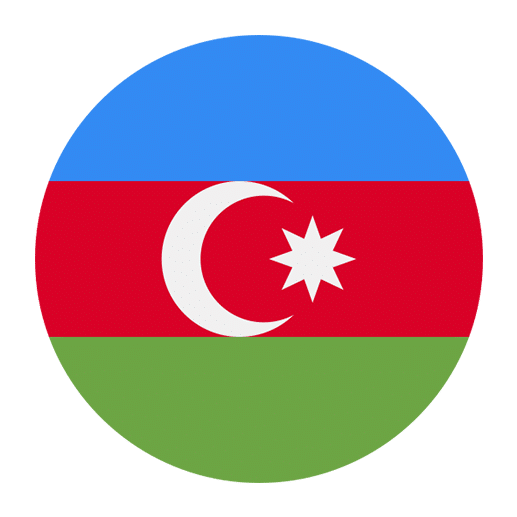Azerbaijani, also known as Azeri, is a fascinating and rich language spoken by approximately 30 million people, primarily in Azerbaijan and parts of Iran. As with learning any language, acquiring a robust vocabulary is a cornerstone of becoming proficient. This article will delve into effective strategies for learning and teaching vocabulary in Azerbaijani, offering practical tips and insights for both students and educators.
Understanding the Basics of Azerbaijani Vocabulary
Before diving into specific techniques for vocabulary acquisition, it’s important to understand the structure and characteristics of the Azerbaijani language. Azerbaijani is a member of the Turkic language family, sharing similarities with Turkish, Uzbek, and other Turkic languages. It uses the Latin alphabet, which makes it somewhat easier for English speakers to learn in terms of reading and writing.
Phonetics and Pronunciation
One of the first steps in mastering Azerbaijani vocabulary is getting comfortable with its phonetic system. The Azerbaijani alphabet consists of 32 letters, many of which correspond closely to their Latin counterparts. However, there are unique sounds that learners should pay attention to, such as the vowel harmony and specific consonants that do not exist in English.
For instance:
– The letter “ə” represents a sound similar to the English “a” in “cat.”
– The letters “ç” and “ş” represent the “ch” and “sh” sounds, respectively.
Proper pronunciation is crucial not only for speaking and listening but also for memorizing new words effectively.
Common Vocabulary Categories
To start building a functional vocabulary in Azerbaijani, learners should focus on common categories that are essential for everyday communication. These include:
– **Basic greetings and expressions**: “Salam” (Hello), “Necəsən?” (How are you?), “Təşəkkür” (Thank you)
– **Numbers and days of the week**: “Bir” (One), “İki” (Two), “Bazar” (Sunday)
– **Family terms**: “Ana” (Mother), “Ata” (Father), “Bacı” (Sister)
– **Food and drink**: “Çay” (Tea), “Yemək” (Food), “Su” (Water)
Focusing on these categories helps learners to quickly acquire a set of practical words and phrases that they can use in daily interactions.
Effective Strategies for Learning Azerbaijani Vocabulary
Flashcards and Spaced Repetition
Flashcards are a time-tested method for vocabulary acquisition. They are particularly effective when combined with spaced repetition systems (SRS), which help learners to review words at increasing intervals. This technique leverages the psychological spacing effect, making it easier to transfer information from short-term to long-term memory.
For Azerbaijani, you can create physical flashcards or use digital tools like Anki or Quizlet. On each flashcard, include the Azerbaijani word, its English translation, and a sentence using the word in context. This not only aids in memorization but also helps with understanding how the word is used in sentences.
Contextual Learning
Learning words in isolation can be challenging and less effective. Instead, try to learn new vocabulary within the context of sentences, dialogues, or stories. This method, known as contextual learning, allows you to see how words function grammatically and semantically within a language.
For example, rather than just memorizing the word “ev” (house), learn it in a sentence: “Bu mənim evimdir.” (This is my house). This approach helps you to understand the word’s usage and improves your ability to recall it when needed.
Language Immersion
Immersion is one of the most effective ways to learn a new language. Surround yourself with Azerbaijani as much as possible. This could mean listening to Azerbaijani music, watching Azerbaijani films or TV shows, or reading books and articles in Azerbaijani. The goal is to expose yourself to the language in a variety of contexts, which helps to reinforce vocabulary and improve comprehension.
If possible, engage in conversations with native Azerbaijani speakers. Language exchange programs or online platforms like Tandem and HelloTalk can connect you with native speakers who are eager to help you practice.
Mnemonics and Memory Aids
Mnemonics are powerful tools for memorizing vocabulary. These are memory aids that link new information to something already familiar. For instance, to remember the Azerbaijani word for “apple” (alma), you could visualize an apple on your palm (alma sounds like “palm”).
Creating vivid and sometimes humorous mental images can make the learning process more enjoyable and effective. The more personal and creative the mnemonic, the better it will stick in your memory.
Regular Practice and Review
Consistency is key when it comes to learning vocabulary. Set aside regular study sessions, even if they are short. Daily practice is far more effective than cramming once a week. Use a variety of methods to keep your practice interesting and engaging.
Review is equally important. Regularly go over the words you have learned to ensure they stay fresh in your memory. Spaced repetition systems can be particularly useful for this purpose.
Teaching Azerbaijani Vocabulary
For educators teaching Azerbaijani, there are several strategies that can enhance the learning experience and help students to acquire vocabulary more effectively.
Interactive Activities
Incorporate interactive activities into your lessons to make learning more engaging. These can include:
– **Role-playing**: Create scenarios where students must use new vocabulary in context, such as ordering food at a restaurant or asking for directions.
– **Games**: Use language games like word matching, bingo, or crossword puzzles to reinforce vocabulary in a fun way.
– **Group activities**: Encourage group discussions or projects where students need to use new words to communicate and collaborate.
Interactive activities not only make learning more enjoyable but also help students to practice using vocabulary in practical situations.
Visual Aids and Multimedia
Visual aids can be incredibly helpful for vocabulary acquisition. Use images, flashcards, and videos to introduce new words. For example, when teaching animal names, show pictures of each animal along with the Azerbaijani word.
Multimedia resources such as songs, movies, and online videos can also enhance the learning experience. These resources provide authentic contexts for vocabulary use and expose students to the sounds and rhythms of the language.
Personalized Learning
Recognize that each student has a unique learning style and pace. Offer personalized learning plans that cater to individual needs. For instance, some students may benefit from more visual aids, while others might prefer auditory or kinesthetic learning methods.
Provide opportunities for students to choose topics that interest them. If a student is passionate about sports, introduce vocabulary related to that topic. Personalized learning increases motivation and makes the learning process more relevant and enjoyable.
Use of Technology
Leverage technology to enhance vocabulary learning. There are numerous apps and online platforms designed to support language learners. Tools like Duolingo, Memrise, and Babbel offer structured vocabulary lessons, interactive exercises, and opportunities for practice.
Additionally, consider using language learning software that incorporates spaced repetition, personalized feedback, and progress tracking. Technology can provide a dynamic and flexible learning environment that supports continuous improvement.
Encouraging Active Use
Encourage students to actively use new vocabulary in speaking and writing. Create opportunities for them to practice in real-life situations. For example, organize language exchange meetups, encourage journaling in Azerbaijani, or set up pen pal exchanges with native speakers.
The more students use the language, the more confident and proficient they will become. Active use reinforces learning and helps to solidify new vocabulary in their minds.
Challenges and Solutions
Learning and teaching Azerbaijani vocabulary comes with its own set of challenges. However, with the right strategies, these challenges can be effectively managed.
Overcoming Pronunciation Difficulties
For English speakers, certain Azerbaijani sounds may be difficult to master. Regular practice and exposure to native speakers can help. Use phonetic guides and pronunciation tools to assist students in getting the sounds right.
Listening exercises, such as repeating after a native speaker or using language learning apps with pronunciation features, can also be beneficial. Encourage students to be patient and persistent, as pronunciation often improves with time and practice.
Managing Vocabulary Overload
It’s easy for learners to feel overwhelmed by the sheer volume of new words they need to learn. To manage this, break down vocabulary into manageable chunks. Focus on high-frequency words that are most useful for communication.
Use spaced repetition to review and reinforce vocabulary over time. Encourage students to set realistic goals and celebrate small victories to maintain motivation.
Maintaining Engagement
Keeping students engaged in vocabulary learning can be challenging, especially over the long term. Vary your teaching methods to keep lessons interesting. Incorporate games, multimedia, and interactive activities to maintain enthusiasm.
Provide regular feedback and encouragement. Recognize and celebrate progress to keep students motivated and invested in their learning journey.
Conclusion
Learning and teaching vocabulary in Azerbaijani can be a rewarding experience. By understanding the basics of the language, employing effective learning strategies, and utilizing engaging teaching methods, both students and educators can achieve significant progress.
Remember that vocabulary acquisition is a gradual process that requires consistent effort and practice. Whether you are a learner or a teacher, stay patient, persistent, and open to new methods and resources. With dedication and the right approach, mastering Azerbaijani vocabulary is an attainable and enriching goal.

